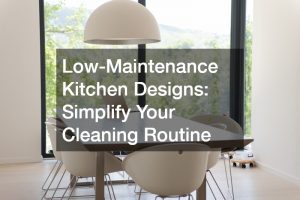Spring is here, and for many homeowners, that means it’s time to start upgrading gardens and outdoor spaces. Curb appeal is vital for aesthetic and resale value, so it’s essential to consider your garden layout before planting.
Whether new to gardening or just looking for fresh ideas, you know it takes more than just sticking a few plants in the ground to create a beautiful, thriving garden. Here are a few things to keep in mind as you plan your garden design:
Access to sunlight
One of the most important things to consider when planning your garden is how much sunlight it will get. Different plants require different amounts of sunlight, so be sure to do your research before you start with anything.
You’ll also want to consider the time of day the sun hits your garden. If you have a west-facing garden, for example, it will get more afternoon sun than a south-facing garden. This factor is crucial because you don’t want to plant something that requires full sun in a spot that only gets partial sun.
Many homeowners make the mistake of not considering the sunlight their garden gets. As a result, their plants don’t thrive. Don’t let this happen to you — take the time to map out your garden’s sun exposure before you start planting.
Size and shape of your space
Another thing to remember is the size and shape of your garden. Obviously, the bigger the space, the more room you have to work. But even if you have a miniature garden, there are ways to make the most of your area.
The key is to maximize the use of vertical space. You can do this by planting climbers, vines, and other plants that grow up instead of out. Doing so will give you more room to work with and make your garden look fuller. You can also use trellises, arbors, and other garden structures to make the most of your space.
It’s also important to consider the shape of your garden when planning its layout. For example, if you have a long and narrow garden, you might want to consider planting in rows or creating a series of small garden beds. This trick will help break up the space and make it more inviting.
So, consider your garden’s size and shape when planning its layout. It will help you make the most of your space and create a more aesthetically pleasing garden.
Soil type
Another essential thing to consider when planning your garden is your soil type. Plants have varying preferences when it comes to soil types, so it’s important to know what soil you have before you start planting.
There are three main soil types: sand, clay, and loam. Sand soil is the lightest and easiest to work with, while clay soil is the heaviest and most challenging. Loam soil is a mix of sand and clay and falls somewhere in the middle.
If you’re not sure what type of soil you have, you can always have your soil tested by a professional. This way, you can be sure you’re planting the right plants in the right soil. By understanding your soil type, you can create a garden that is more likely to thrive.

Drainage
In addition to soil type, you’ll also want to consider drainage when planning your garden layout. Incoming and outgoing water must have a place to go, or your plants will suffer.
One way to improve drainage is to add organic matter to your soil. It can be anything from compost to manure. Adding organic matter will help loosen up the dirt and improve drainage.
You can also create raised garden beds to improve drainage. This practice is especially helpful if you have clay soil. By raising your garden beds, you can ensure that water flows away from your plants instead of pooling around them.
You should also consider incoming water from your home. Rainwater can pool in certain areas of your property and run into your garden. To prevent this, you must ensure you have high-quality rain gutters that direct water away from your home.
You should also ensure a slight slope away from your house. It will help direct rainwater away from your foundation and into your garden. It’s important to consider drainage when planning your garden layout. In doing so, you can ensure that your plants have the best chance of living a long and healthy life.
As you can see, there are many things to consider when planning your garden layout. By thinking about your space, soil type, drainage, and sun exposure, you can create a beautiful and functional garden. So, don’t wait — get started on your garden today.




